On September 24, 2025, the Department of Homeland Security (DHS) will publish a proposed regulation that would significantly reshape the H-1B cap lottery. Under the proposal, USCIS would replace the current random selection process with a wage-weighted, beneficiary-centric system that gives beneficiaries offered higher wages better odds of selection, while still preserving opportunities at all wage levels. If finalized, the regulation could take effect in time for the FY 2027 H-1B cap season that begins in March 2026, and would have important implications for how employers plan compensation, assign SOC codes, and coordinate H-1B filings across entities.
Executive Summary
- DHS has proposed replacing the purely random H-1B cap lottery with a beneficiary-centric, wage-weighted system.
- Higher wage levels receive more entries in the lottery: Level IV (4x), Level III (3x), Level II (2x), Level I (1x).
- Registrations and petitions must include the offered wage, OEWS level, SOC code, and intended work location.
- The rule would not alter prevailing wage obligations; it only changes selection odds.
- DHS is accepting public comments for 30 days after publication in the Federal Register.
Why DHS Is Acting Now
USCIS has long relied on a random lottery to allocate H-1B visas when demand exceeds supply. DHS now proposes to prioritize higher wages as a proxy for skill and employer need, while still leaving opportunities at all four wage levels.
The rule also builds on USCIS’s beneficiary-centric registration system, introduced in 2024, which ensures each individual can be entered only once regardless of how many employers file on their behalf.
How the New Selection Framework Operates
- Each registration will be weighted according to its OEWS wage level.
- A beneficiary will only be counted once toward the cap, even if multiple registrations exist.
- If different employers file at different wage levels, the lowest level governs.
- For jobs spanning multiple locations, the lowest location-based wage level applies.
- If the proffered wage is a range, USCIS will use the lowest number in the range.
- If electronic registration is suspended, the same weighting system will be applied to petitions filed by the deadline.
DHS proposes several checks to discourage gaming and protect program integrity:
- Employers must certify each registration reflects a real job offer and an intent to file if selected.
- USCIS may deny or revoke petitions if it finds attempts to manipulate odds.
- Discrepancies between registration, LCA, and petition data could trigger scrutiny or adverse action.
Expected Outcomes and DHS’s Projections
- Under the current random system, overall selection odds are about 29.6%.
- With weighting under the proposed regulation, DHS projects:
- Level I: ~15.3%
- Level II: ~30.6%
- Level III: ~45.9%
- Level IV: ~61.2%
- DHS anticipates a shift in selections toward higher wages, with economic redistribution effects of about $858 million in FY 2026, rising to $3.4 billion annually by FY 2029–2035.
Practical Considerations for Employers
- Compensation decisions now influence selection chances, and higher wage levels can materially improve odds.
- Accurate SOC coding and leveling are critical to avoid possible issues with H-1B petitions filed after selection.
- Multi-site and remote roles must be analyzed carefully, since the lowest wage level applies.
- Wage ranges reduce flexibility, as the lowest number controls.
- Affiliate coordination is essential to prevent duplicate filings that could hurt selection odds.
- No change to DOL rules. As always, employers must continue to meet prevailing wage and LCA requirements.
Preparing for What’s Ahead
- Assess FY 2027 candidates now: map positions to SOC codes and wage levels, and run scenario analyses.
- Strengthen data alignment across registrations, LCAs, and petitions.
- Coordinate internally and with vendors to manage filings across related entities.
- Document bona fide offers and wage determinations to support integrity reviews.
- Consider submitting comments on practical concerns such as multi-location roles, wage ranges, and private survey use.
Timing and Next Steps
- The comment period will run for 30 days following publication on September 24, 2025.
- If finalized in time, the weighted system could apply to the FY 2027 cap season.
- DHS emphasizes severability: if parts of the rule are challenged in court, other provisions may still take effect.
Goel & Anderson will continue to track this rulemaking and provide strategic guidance. If you have questions about how the proposal could impact your H-1B workforce planning, please reach out to your G&A attorney.


